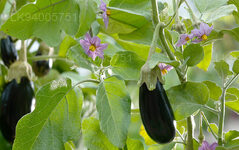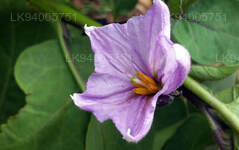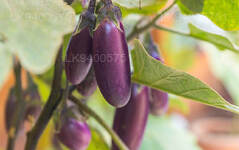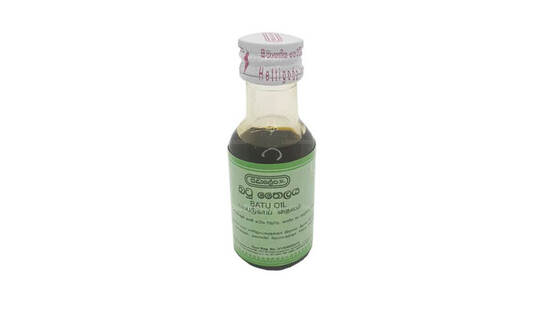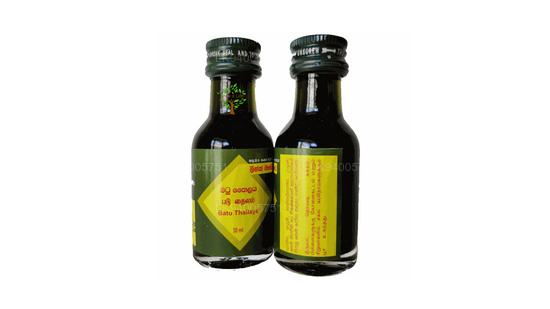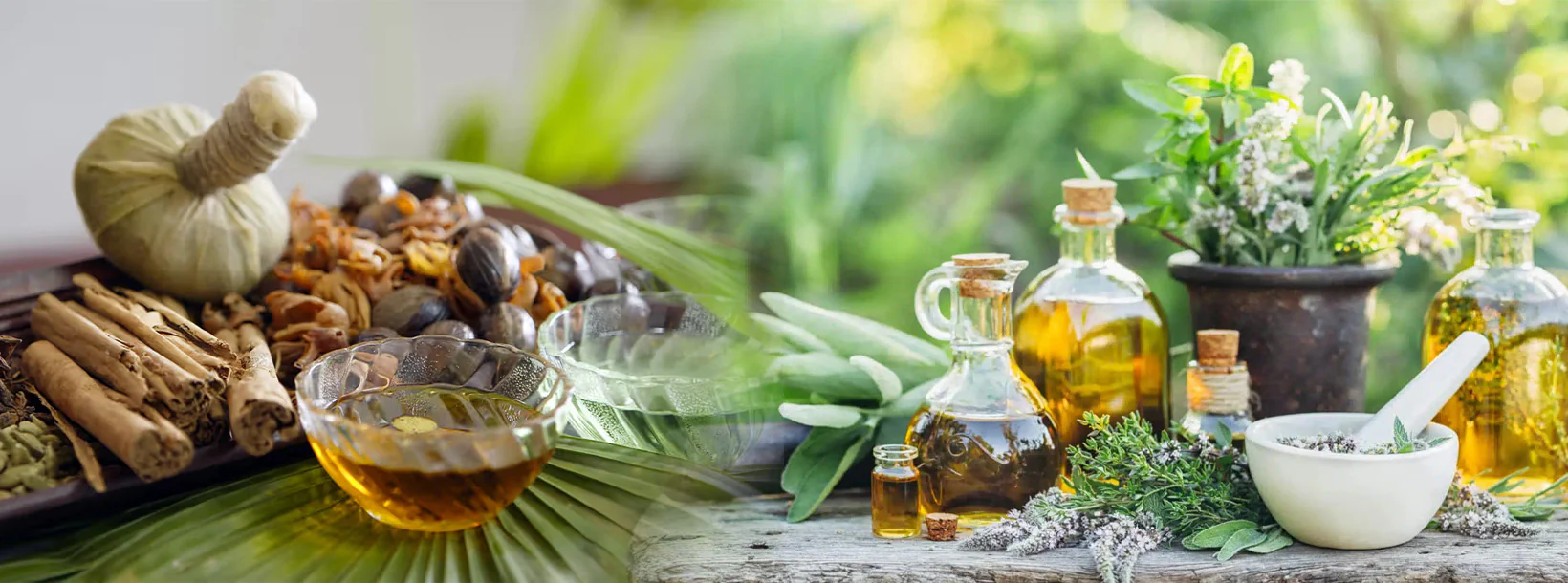
Ayurvedic Medicinal Plants
Sri Lanka's Ayurvedic tradition features a rich variety of medicinal plants used for centuries. Sri Lanka has a rich tradition of Ayurvedic medicine, drawing on its indigenous knowledge and a variety of medicinal plants. Here are some notable Ayurvedic medicinal plants found in Sri Lanka:
Solanum melongena ෴ එළබටු
Eggplant (US, Canada), aubergine (UK, Ireland) or brinjal (Indian subcontinent, Singapore, Malaysia, South Africa) is a plant species in the nightshade family Solanaceae. Solanum melongena is grown worldwide for its edible fruit.
Most commonly purple, the spongy, absorbent fruit is used in several cuisines. Typically used as a vegetable in cooking, it is a berry by botanical definition. As a member of the genus Solanum, it is related to the tomato, chili pepper, and potato, although those are of the New World while the eggplant is of the Old World. Like the tomato, its skin and seeds can be eaten, but, like the potato, it is usually eaten cooked. Eggplant is nutritionally low in macronutrient and micronutrient content, but the capability of the fruit to absorb oils and flavors into its flesh through cooking expands its use in the culinary arts.
It was originally domesticated from the wild nightshade species thorn or bitter apple, S. incanum, probably with two independent domestications: one in South Asia, and one in East Asia.] In 2018, China and India combined accounted for 87% of the world production of eggplants.
DescriptionThe eggplant is a delicate, tropical perennial plant often cultivated as a tender or half-hardy annual in temperate climates. The stem is often spiny. The flowers are white to purple in color, with a five-lobed corolla and yellow stamens. Some common cultivars have fruit that is egg-shaped, glossy, and purple with white flesh and a spongy, "meaty" texture. Some other cultivars are white and longer in shape. The cut surface of the flesh rapidly turns brown when the fruit is cut open (oxidation).
Eggplant grows 40 to 150 cm (1 ft 4 in to 4 ft 11 in) tall, with large, coarsely lobed leaves that are 10 to 20 cm (4 to 8 in) long and 5 to 10 cm (2 to 4 in) broad. Semiwild types can grow much larger, to 225 cm (7 ft 5 in), with large leaves over 30 cm (12 in) long and 15 cm (6 in) broad. On wild plants, the fruit is less than 3 cm (1+1⁄4 in) in diameter; in cultivated forms: 30 cm (12 in) or more in length are possible for long, narrow types or the large fat purple ones common to the West.
Botanically classified as a berry, the fruit contains numerous small, soft, edible seeds that taste bitter because they contain or are covered in nicotinoid alkaloids, like the related tobacco..
Historyhere is no consensus about the place of origin of eggplant; the plant species has been described as native to India, where it continues to grow wild, Africa, or South Asia. It has been cultivated in southern and eastern Asia since prehistory. The first known written record of the plant is found in Qimin Yaoshu, an ancient Chinese agricultural treatise completed in 544 CE. The numerous Arabic and North African names for it, along with the lack of the ancient Greek and Roman names, indicate it was grown throughout the Mediterranean area by the Arabs in the early Middle Ages, who introduced it to Spain in the 8th century. A book on agriculture by Ibn Al-Awwam in 12th-century Arabic Spain described how to grow aubergines. Records exist from later medieval Catalan and Spanish.
The aubergine is unrecorded in England until the 16th century. An English botany book in 1597 described the madde or raging Apple:
This plant groweth in Egypt almost everywhere... bringing foorth fruite of the bignes of a great Cucumber.... We have had the same in our London gardens, where it hath borne flowers, but the winter approching before the time of ripening, it perished: notwithstanding it came to beare fruite of the bignes of a goose egge one extraordinarie temperate yeere... but never to the full ripenesse.
Because of the plant's relationship with various other nightshades, the fruit was at one time believed to be extremely poisonous. The flowers and leaves can be poisonous if consumed in large quantities due to the presence of solanine.
The eggplant has a special place in folklore. In 13th-century Italian traditional folklore, the eggplant can cause insanity. In 19th-century Egypt, insanity was said to be "more common and more violent" when the eggplant is in season in the summer.
CultivarsDifferent cultivars of the plant produce fruit of different size, shape, and color, though typically purple. The less common white varieties of eggplant are also known as Easter white eggplants, garden eggs, Casper or white eggplant. The most widely cultivated varieties—cultivars—in Europe and North America today are elongated ovoid, 12–25 cm (4+1⁄2–10 in) long and 6–9 cm (2+1⁄2–3+1⁄2 in) broad with a dark purple skin.
A much wider range of shapes, sizes, and colors is grown in India and elsewhere in Asia. Larger cultivars weighing up to a kilogram (2.2 pounds) grow in the region between the Ganges and Yamuna Rivers, while smaller ones are found elsewhere.[citation needed] Colors vary from white to yellow or green, as well as reddish-purple and dark purple. Some cultivars have a color gradient—white at the stem, to bright pink, deep purple or even black. Green or purple cultivars with white striping also exist. Chinese cultivars are commonly shaped like a narrower, slightly pendulous cucumber. Also, Asian cultivars of Japanese breeding are grown.
- Oval or elongated oval-shaped and black-skinned cultivars include 'Harris Special Hibush', 'Burpee Hybrid', 'Bringal
- Bloom', 'Black Magic', 'Classic', 'Dusky', and 'Black Beauty'.
- Slim cultivars in purple-black skin include 'Little Fingers', 'Ichiban', 'Pingtung Long', and 'Tycoon'
- In green skin, 'Louisiana Long Green' and 'Thai (Long) Green'
- In white skin, 'Dourga'.
- Traditional, white-skinned, egg-shaped cultivars include 'Casper' and 'Easter Egg'.
- Bicolored cultivars with color gradient include 'Rosa Bianca', 'Violetta di Firenze', 'Bianca Sfumata di Rosa' (heirloom), and 'Prosperosa' (heirloom).
- Bicolored cultivars with striping include 'Listada de Gandia' and 'Udumalapet'.
- In some parts of India, miniature cultivars, most commonly called baigan, are popular.
- S. m. var. esculentum – common aubergine, including white varieties, with many cultivars
- S. m. var. depressum – dwarf aubergine
- S. m. var. serpentium – snake aubergine
Raw eggplant is 92% water, 6% carbohydrates, 1% protein, and has negligible fat (table). It provides low amounts of essential nutrients, with only manganese having a moderate percentage (11%) of the Daily Value. Minor changes in nutrient composition occur with season, environment of cultivation (open field or greenhouse), and genotype.
Cultivation and pestsIn tropical and subtropical climates, eggplant can be sown in the garden. Eggplant grown in temperate climates fares better when transplanted into the garden after all danger of frost has passed. Eggplant prefers hot weather, and when grown in cold climates or in areas with low humidity, the plants languish or fail to set and produce mature fruit.[53][54] Seeds are typically started eight to 10 weeks prior to the anticipated frost-free date. S. melongena is included on a list of low flammability plants, indicating that it is suitable for growing within a building protection zone.
Spacing should be 45 to 60 cm (18 to 24 in) between plants, depending on cultivar, and 60 to 90 cm (24 to 35 in) between rows, depending on the type of cultivation equipment being used. Mulching helps conserve moisture and prevent weeds and fungal diseases and the plants benefit from some shade during the hottest part of the day. Hand pollination by shaking the flowers improves the set of the first blossoms. Growers typically cut fruits from the vine just above the calyx owing to the somewhat woody stems. Flowers are complete, containing both female and male structures, and may be self- or cross-pollinated.
Many of the pests and diseases that afflict other solanaceous plants, such as tomato, capsicum, and potato, are also troublesome to eggplants. For this reason, it should generally not be planted in areas previously occupied by its close relatives. However, since eggplants can be particularly susceptible to pests such as whiteflies, they are sometimes grown with slightly less susceptible plants, such as chili pepper, as a sacrificial trap crop. Four years should separate successive crops of eggplants to reduce pest pressure.
Common North American pests include the potato beetles, flea beetles, aphids, whiteflies, and spider mites. Good sanitation and crop rotation practices are extremely important for controlling fungal disease, the most serious of which is Verticillium.
The potato tuber moth (Phthorimaea operculella) is an oligophagous insect that prefers to feed on plants of the family Solanaceae such as eggplants. Female P. operculella use the leaves to lay their eggs and the hatched larvae will eat away at the mesophyll of the leaf.
-

Ankenda
Acronychia pedunculata -

Beli
Aegle marmelos -

Bakmi
Nauclea orientalis -

Bangwel-geta
Coscinium fenestratum -

Bukinda /Walkinda
Tinospora malabarica -

Bu- kobbe
Allophylus cobbe -

Dodan –kaha
Memecylon capitellatum -

Diyamitta
Cissampelos pareira -

Embul dodan
Citrus aurantium -

Gas nidikumba
Biophytun reinward -

Hintambala
Carmona microphylla -

Goraka
Garcinia cambogia -

Karapincha
Murraya koenigii -

Keppetiya
Croton laccifer -

Kohomba
Azadirachta indica -

Kotikan-bevila
Sida alba -

Kudumiris (Forest paper)
Toddlia asiatica -

Kurundu
Cinnamomum zeylanicum -

Mahakaramba
Carissa carandas -

Muna mal
Mimusops elengi -

Nelli
Phyltanthus emblica -

Puwak
Areca catechu -

Rath mal
Ixora coccinea -

Eepatta / Ruk - anguna
Alangium salviifolium -

Siyambala
Tamarindus indica -

Walangasal / Wal-embilla
Embelia ribes -

Wal Karapincha
Micromelum ceylanicum -

Welangiriya
Paramignya monophylla
Ayurvedic and Herbal
-
Siddhalepa Ayurveda kruidenbalsem
Normale prijs Vanaf €0,95 EURNormale prijsEenheidsprijs / per -
Lakpura gedehydrateerde zuurzak (Guanabana, Graviola, Guyabano) Bladeren
Normale prijs Vanaf €1,95 EURNormale prijsEenheidsprijs / per -
Sethsuwa Pranajeewa Miracle Oil
Normale prijs Vanaf €3,95 EURNormale prijsEenheidsprijs / per -
Link Swastha Thriphala (30 tabletten)
Normale prijs Vanaf €1,95 EURNormale prijsEenheidsprijs / per

